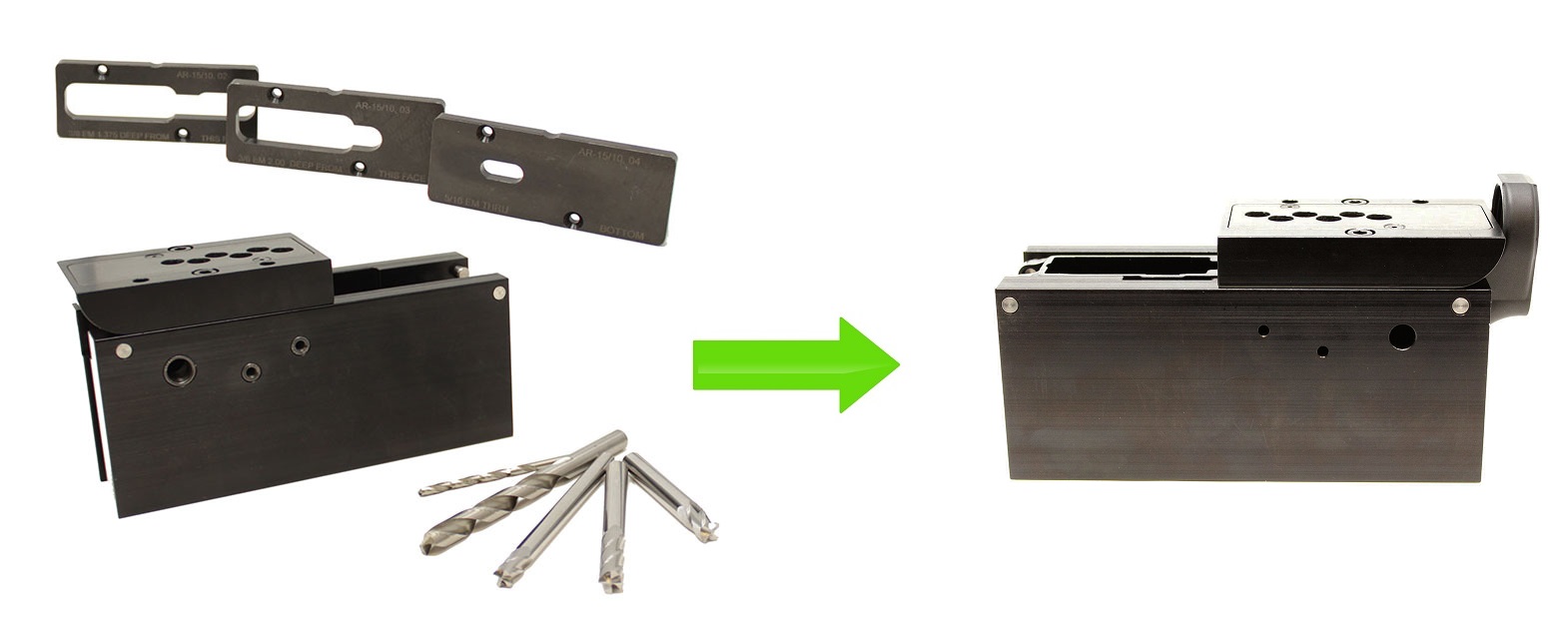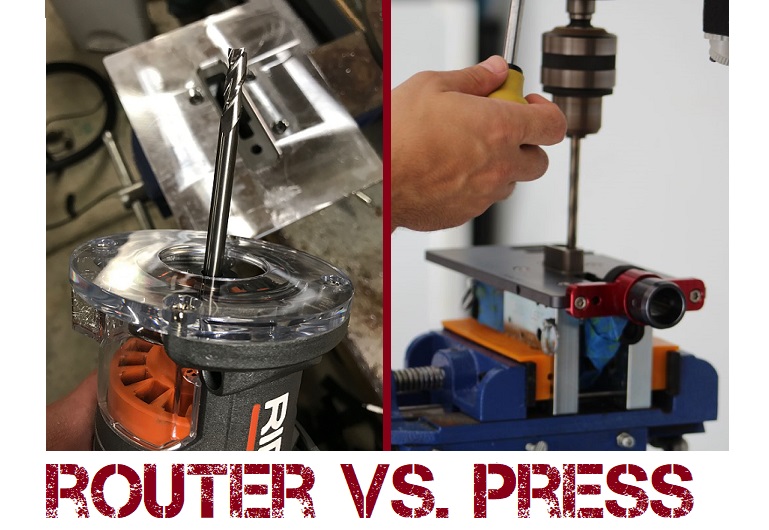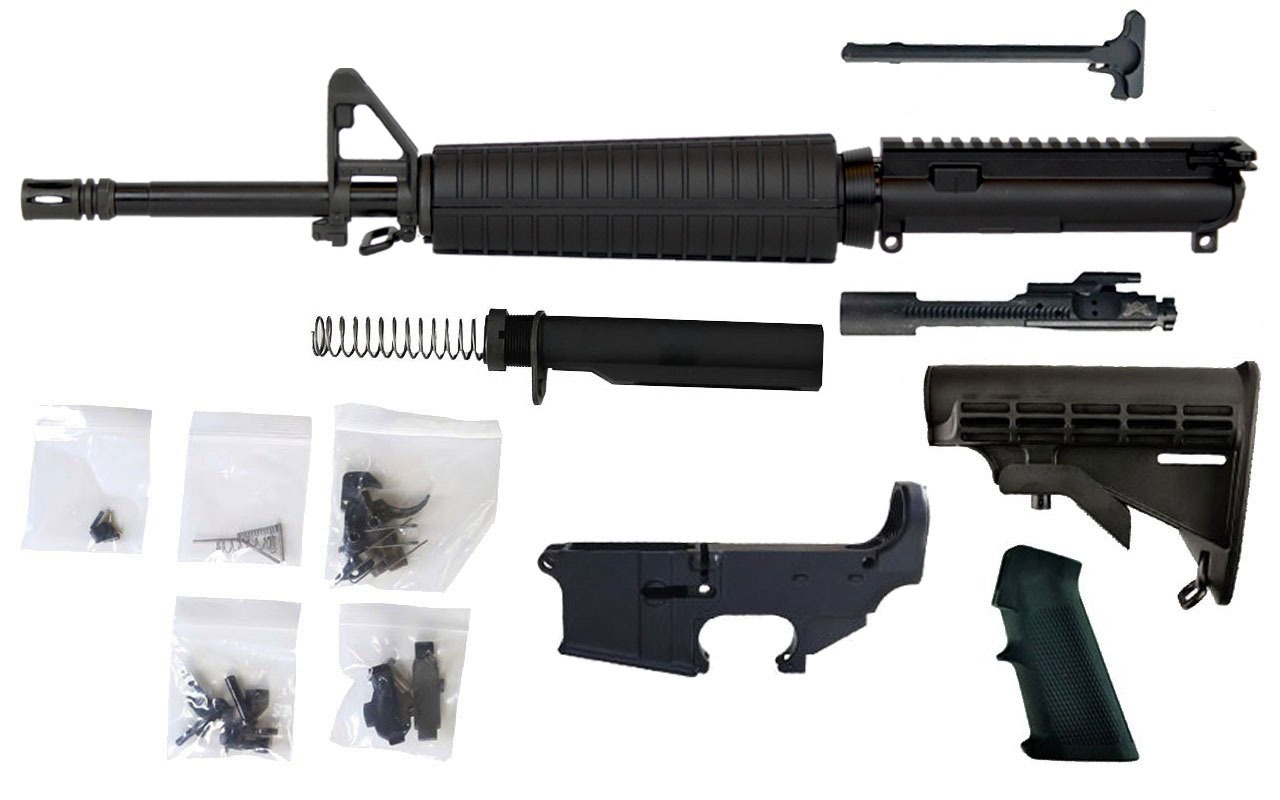We review a lot of handguns and rifles sold at retail, but today we’re taking a look at a new type of firearm – one that isn’t legally considered a gun until you fabricate it at home. You might’ve heard of it before: The 80% lower receiver.

Specifically designed for the modular AR-15 platform, the 80% lower is an unfinished, stripped lower receiver, the only part of the AR-15 considered a firearm in the eyes of the law. Usually made from billet or forged aluminum or polymer, the 80% lower is what the Bureau of Alcohol, Tobacco, and Firearms (ATF) calls a “receiver blank”.
Receiver blanks are convenient because they aren’t regulated like firearms. You can order one online, have it shipped straight to your home with the requisite tools and parts, and build it yourself – all without having to go through an FFL, paying extra fees, or shelling cash for high taxes.
Fabricating the Receiver at Home
You, the builder-to-be, must perform a few basic machining operations on the unfinished lower: Cut the main cavity for the parts kit and trigger, and drill the pin holes for the hammer, trigger, and safety. This is performed with a gunsmithing workstation aptly named the 80% lower jig:

There are few jigs available with different features, but they all use a set of hardened plates to “template” where the main cavity and trigger slot of the receiver need to be cut. Included with the typical jig are all the drill bits and end mill bits required, too. The main cavity is completed by first drilling pilot holes, then removing the remaining material by milling it with the included end mill bit(s). The measurements and depths you need to cut are included with the instructions. Pre-drilled holes show where to drill the hammer, trigger, and safety pin holes – no measuring required.
80% Jigs: Tooling Overview
Jigs are categorized into two types, and you’ll pick your jig based on the tools available to you:
Drill Press Jigs and Router Jigs.
Using a router jig allows you to cut the remaining material like you would with a milling machine, making side-to-side movements and increasing the cutting depth of the bit with every pass. Using a drill press jig requires you to make plunge cuts by lowering the end mill into the cavity, removing material vertically, and raising it before readjusting side to side.
“Which Jig is Best?”

A router jig is quicker but using one requires patience, frequent lubrication of the router and jig plates to prevent binding and friction, and a steady hand. The end mill must be lowered into one of the pilot holes while it’s spinning, which can be dangerous if you’re not careful.
A drill press jig is slower but affords better control. Using a drill press to make plunge cuts eliminates the risk of the end mill kicking back or “nicking” the jig or receiver walls that comes with using a router.
Total machining time with either method is usually around 2 hours for first-time builders. Experienced builders can complete a typical receiver in less than one hour. The bulk of the project centers on completing the cavity and trigger slot for the parts kit, while drilling the pin holes takes a few moments.
Is All of This Legal?
Yes. Unknown to many gun owners, the Gun Control Act of 1968 (GCA) solidified a unique Second Amendment right:
“Firearms may be lawfully made by persons who do not hold a manufacturer’s license under the GCA provided they are not for sale or distribution and the maker is not prohibited from receiving or possessing firearms. However, a person is prohibited from assembling a non-sporting semiautomatic rifle or shotgun from 10 or more imported parts, as set forth in regulations in 27 CFR 478.39.”
So long as you’re not building a weapon made from imported parts (and you’re not building an NFA item, like a short-barreled rifle or machinegun), then you’re in the clear.
NOTE: Some States Have Banned 80% Lowers
Although the practice is legal by Federal law and the ATF, states like New York and New Jersey have argued the 80% lower receiver is illegal to buy and build with, usually citing some state definition of what (incorrectly) constitutes an assault weapon.
How to Complete Your Build
Once your receiver is cut and drilled, you’ll be the proud owner of a stripped AR-15 lower receiver – a functional firearm by the ATF’s definition. With the finished receiver in hand, you can complete your build using regular retail parts. A homemade lower is no different in form or function than a store-bought lower receiver.
To complete your build, you’ll need the following components or parts kits:
- Lower Parts Kit
- Buffer Assembly
- Upper Receiver Assembly
Alternatively, preconfigured build kits now exist which include all the necessary components for building your rifle from scratch, minus the jig and tooling.

Frequently Asked Questions
Q: Why build instead of buy?
A: Many shooters build AR-15s by purchasing a stripped receiver and piecing it together, like you would with an 80% lower. But choosing to fabricate a receiver instead of buying one may actually be less expensive: You don’t have to shell out money on the background check and FFL fees, there are no special “firearm” taxes or other bureaucratic fees that many states like to tack on, and you’re not paying any dealer markup or retail margins.
While the jig is an added cost ($75 to $150), most are reusable and so is the tooling. That means you can fabricate more than lower with the same equipment. Most 80% lowers cost around $50 to $60, while most stripped lower receivers start at $100 to $150 or more – that doesn’t include the other fees (and really, who builds just one AR?).
Q: Does my finished receiver need a serial number?
A: At the Federal level (and for most states), no. An AR-15 or other firearm built for personal use does not require a unique serial number to be engraved or affixed on the lower receiver (the firearm) or anywhere else on the weapon. California does require your 80% lower to have a unique serial number issued before you start cutting and drilling.
Q: Can I sell my homemade firearm?
A: Yes. There’s a misconception that selling a gun you built constitutes manufacturing, which would require having a Federal Firearms License (FFL). The ATF only says that you cannot build a firearm with the intent of selling it. Common sense says our intentions change over time. If you wish to sell the weapon at a later time, this is legal. It’s a good idea to serialize your receiver in this case, and you should conduct the sale through an FFL with the buyer also performing a background check.
Q: What kind of weapon can I build with an 80% lower?
A: The 80% lower was designed for the AR-15 rifle and pistol chambered in 5.56 NATO or .223 Remington, though receiver blanks now exist for the DPMS-patterned AR in .308, as well as 6.5 Creedmoor. Blanks now also exist for the 1911 platform and the Sig Saur P320, and there is a Glock-compatible frame blank available, too.
Q: Are there any special requirements for buying all this?
A: No. Because 80% lowers aren’t considered firearms, they’re not regulated like firearms in any way. Just like any other consumer product, you may purchase one (including the jig and all necessary AR parts) online without special paperwork or other requirements, and everything will ship to your home address. Some companies may refuse shipments to a residence located in a state that has banned AR-15s, 80% lowers, or other gun-making kits – just check your local laws first.
Q: Got any tips for building?
A: When completing the lower, use a lot of cutting fluid or lubricant that’s designed for aluminum and tool bits. Before you’re ready to pull the trigger for the first time, we recommend checking out some of our other guides:
* This guest post is brought to you by our friend Travis Noonan *
Travis is a military veteran, gunsmith, and writer. He spends his days covering gun news and reviews, and spends his spare time fabricating 80% lowers and building tactical rifles.


